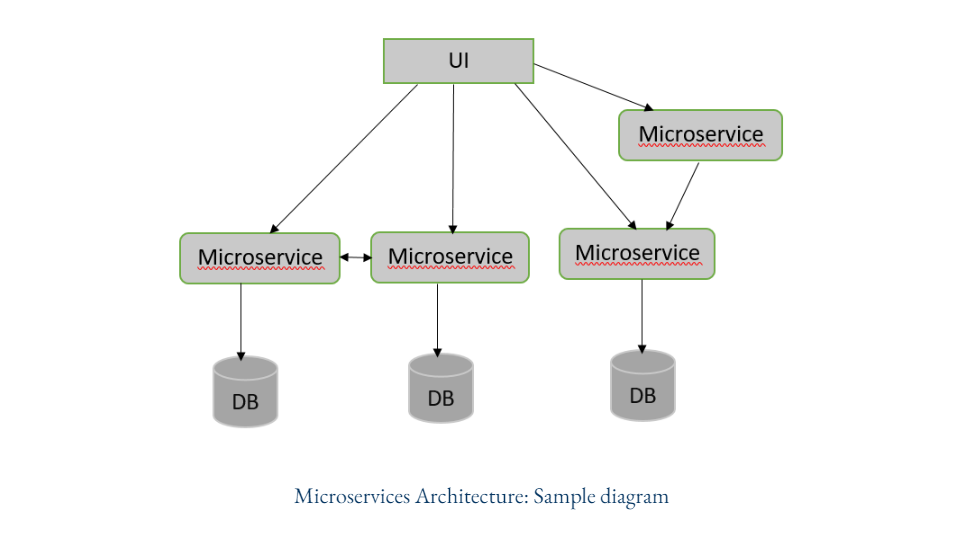BLACK FRIDAY
85% Discount for all November
85% Discount for all November

Software Development
Microservices
Hello everyone! In this blog, we will see a brief introduction to Microservices Architecture.
There is a lot of hype today about Microservices Architecture (Microservices). Being the preferred methodology in developing many-core applications, Microservices has grown in demand. So why exactly? Let’s take a look.
Before Microservices came Monolithic services in which all the software components of an application could be assembled and tightly packed into a single container, wherein only a single codebase is maintained for the entire application. This works fine for small applications. However, it becomes difficult to decipher the code when application requirements increase, and finding issues/faults tends to be tedious. Application scaling turns out to be challenging, and any further modifications impact the entire application as the services are tightly coupled. As the application complexity grows, the service startup takes more time. There is a drawback of not having an option to run only the specific required service, and the entire application needs to be rebooted.

Considering the difficulty in using Monolithic services for large and complex applications, the necessity for better architecture arose, and Microservices Architecture was introduced.
What are Microservices?
Microservices is an architectural pattern in which the applications are composed of small components, each component handling an individual function or service. These service modules are loosely coupled. They communicate with each other using well-defined interfaces. Since Microservices makes applications modular, it is easier to deploy changes without rebooting the entire system.
Some large-scale websites using Microservices Architecture are Netflix, Amazon, eBay, etc.

Microservices Advantages
Each module handles a specific service, and all modules are loosely coupled. Hence changes made in one module will not affect others.
Since services are isolated, individual resources can be allocated to each service. This will help its response time. Resources can be assigned as per requirements. More resources can be allotted to that service if a module is accessed frequently.
Fault detection and correction are easier. Furthermore, since the system is modular if any feature is not working, only that particular module handling that feature needs to be changed, tested, and deployed.
Each module can select its coding technology to be used. There is no codebase dependency on each other.
Each service or module can have its database.
Team management is easy. Small teams can work simultaneously on different modules. This leads to productive and faster development and deployment of the application.
Since the data is not placed in a single place, development teams for each module can choose which data model they need to follow, and it does not affect other modules.
Microservices Challenges
Different modules can be developed using other programming languages. Hence, skilled professionals with extensive knowledge in those specific languages will be required to monitor all these modules.
Since the modules are developed independently, reproducing an issue will be difficult as the version of one or more modules might have already changed.
Each service or module can have separate servers, making Microservices costly.
As new services are added, the system becomes complex, and this may cause operational complexity during deployment.
Each microservice is responsible for its data. Hence maintaining data consistency can be a challenge.
The above generic introduction, advantages, and challenges only form the tip of the iceberg, and there is a lot more to the Microservices Architecture story.
See you all in my next blog!
Wednesday, Jun 8, 2022